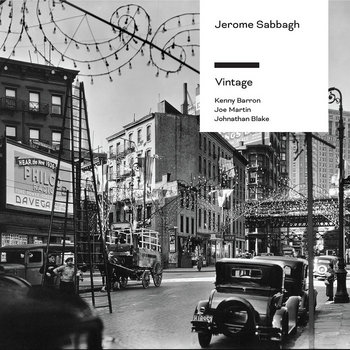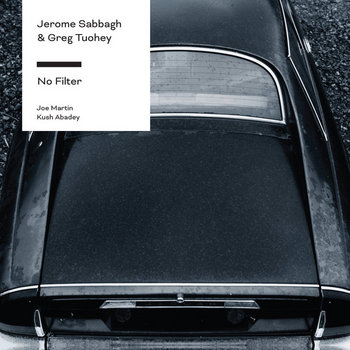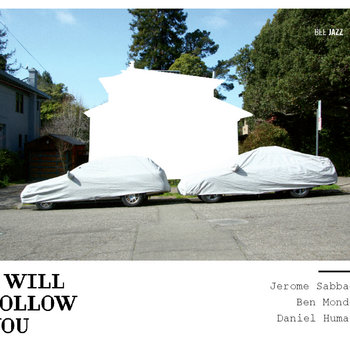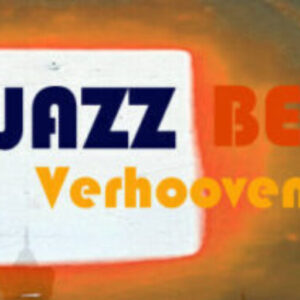Jerome Sabbagh Vintage
Jerome Sabbagh Vintage
Release Date: 15.09.2023
Jerome Sabbagh – tenor saxophone
Kenny Barron – piano
Joe Martin – bass
Johnathan Blake – drums
jeromesabbaghl.com
Sunnyside Rcordings
„Der Saxofonist Jerome Sabbagh bevorzugt die Spontaneität zwischen den Interpreten auf der Bühne (…) Auf Vintage, seinem ersten Album als Leader mit Klavier, holt Sabbagh die Klavierlegende Kenny Barron in sein All-Star-Quartett, um eine Aufnahme zu machen, die Generationen verbindet und Traditionen wieder lebendig werden lässt..„
Ich bin On a Misty Night gleich mehrmals aufgesessen – ein Stück von Tadd Dameron aus dem Jahr 1957, das erste Mal aufgespielt mit John Coltrane auf dem Album Mating Call (Referenz). Weitere Referenzen bieten Xhosa Cole, Dr. Lonnie Smith oder Sonny Stitt und Chet Baker, Beispiele, die auf unterschiedliche Weise diesem so eindeutigen Chorus begegnen.
Erwähnt vor dem Hintergrund, da nicht selten Cover und Linernotes wichtiger erscheinen als der Inhalt auf Vinyl oder CD, auch erwähnt vor dem Hintergrund, dass nicht selten Liner Notes, Cover oder Reviews zu Alben weniger ihrem Inhalt entsprechen. Man sich erst die Aufnahmen anhören sollte, um einen eigenen Eindruck zu bekommen.
Eh man zu lesen beginnt, zu welch unterschiedlichen Bewertungsmaßstäben unterschiedliche Herangehensweisen führen. Wer wem reinen Wein einschenkt und wer wem die Vorfreude nimmt.
Es handele sich bei dieser Aufnahme um eine nostalgisch-motivierte oder schön entspannte Note, es ist von einer unnachgiebigen Bop-Haltung die Rede – Sabbagh orientiere sich an so Saxophonisten wie Stan Getz und Sonny Rollins, kompositorischen Scharfsinn legt er an den Tag, alles in allem aber handele es sich um einen nur befriedigenden Studio-Act, ohne zu glänzen, neue Wege werden nicht beschritten. So weit, so traurig.
Bevor ich mich über die Selbstsicherheit wundere, mit der Freunde guter Musik sich auf das Konstrukt von Musik zurückziehen, befasse ich mich mit dem Gesamtwerk von Jerome Sabbagh und stelle fest, das ist mehr als beachtlich – ausdifferenziert, vielseitig und mit sehr unterschiedlichen Herangehensweisen.
Ob experimentell in Soundcollagen auf I Follow You mit Ben Monder von 2010 (auch elektronisch, um nicht zu sagen: innovativ), ob melodisch wie auf Like a Tree in The City mit dem Laurent Coq Quartet von 2003, ob kontrastreich wie mit Marta Sanchez 2015 und 2017, oder ob im staubtrockenen Bebop wie auf One Two Three von 2008 ohne die Weichzeichnungen einer Gitarre oder eines Klaviers.
Fühlt sich an, als fehlte noch eine Nuance.
Mit dem Piano-Ass Kenny Barron – dem man nachsagen kann, dass er nicht nur abwechslungsreich begleitet, sondern gleich auch treibende Kraft im US-amerikanischen Jazz ist, als Impulsgeber und Pflegeinstanz des traditionellen Jazz mit großer Spannweite – findet Jerome Sabbagh endlich Zugang zu jenem Pianisten, den er schon mit Stan Getz bewunderte, vor mehr als 30 Jahren!
So geht es bei dieser Aufnahme weniger ums Siegertreppchen in der Kategorie Standards im Jazz – oder welche Neuigkeiten Tradiertes hervorbringen und auch nicht, ob die Neugier des Publikums gestillt werden kann, es geht zuvorderst um das Zusammenwirken zweier, zwischen denen ein Altersunterschied von 30 Jahren liegt – Kenny Barron Jahrgang 1943 – Jerome Sabbagh Jahrgang 1973. Jerome Sabbagh erfüllt sich einen Jugendtraum, wenn du so willst, eins zu eins in den Liner Notes nachzulesen:
Dreißig Jahre später fand sich Sabbagh in Barrons Haus wieder, wo die beiden Standards und eine Reihe von Sabbaghs Eigenkompositionen spielten. Beide genossen die Begegnung, und der ältere Musiker lobte den jüngeren für seine Kompositionen. Sabbagh wiederum liebte Barrons Anschlag, seinen hellsichtigen Kompositionsstil und seine Leichtigkeit im Umgang mit der Musik. Da Sabbagh wusste, wie selten es ist, mit einer Legende eine Aufnahme zu machen, war ihm klar, dass er das Projekt auf die Beine stellen musste.
Auf dem Siegertreppchen ihrer Begegnung an sich erspielen sie sich eine Auseinandersetzung über die verbindenden Elemente der Musik, das sind Standards, überlieferte Songs, tradiert oder neu komponiert. Beim Hören der Aufnahmen bin ich mir unsicher, welche davon im Studio aufgenommen sind, welche aus dem Haus von Kenny Barron stammen – möglicherweise kommen sie komplett aus dem Studio – eine Spekulation – wir haben im Ergebnis eine Mischung aus vier Quartett-Aufnahmen und drei Duo Aufnahmen.
Die Ballade A Flower is a lovesome thing von Billy Strayhorn im Duo, gefolgt von Elson‘ Energy mit Tempo im Quartett, eine Eigenkomposition von Sabbagh – es gibt einen Lakmusabstrich in Slay the Giant als Quartett – es heißt schlage den Riesen – nun: wer ist Riese und wer schlägt wen? We See und Ask Me Now wieder im Duo, im Duett, im Dialog – Kenny Barron, die Legende und Jerome Sabbagh, der das Spiel Barrons auf sich wirken lässt – auch das ist höchst kommunikativ und respektvoll.
So gesehen steht das Album im Wechsel seiner Teile – den dynamischen Teilen im Quartett stehen die ruhigen Teile im Duett oder Dialog gegenüber, gut möglich, dass sie nicht viel Zeit hatten, ebenso gut möglich, dass die drei Duo-Aufnahmen sich dem Alles geht zu schnell und das auch vorbei behaupten wollen im Sinn eines nachhaltigen Gesprächs, wie schön, dass es Aufnahmemedien gibt für so eine Begegnung, möchte man sagen, der Moment wurde auf wunderbare Weise eingefangen.
Umgekehrt: sich zu verständigen geht nicht nur über Lautstärke und technische Finesse, es geht auch einen Gang zurückgenommener – das kann man sich nicht häufig genug wünschen, steht ebenso in der Beschreibung:
„Die Aufnahme schließt mit zwei Monk-Stücken, ein Hinweis auf Sabbaghs und Barrons gemeinsame Vorliebe für Monks Musik: „We See“ und „Ask Me Now“, die auf Vorschlag des Schlagzeugers Blake im Duett gespielt werden. Ersteres ist eine temperamentvolle Aufnahme, bei der Barron seine rhythmische Leichtigkeit und harmonische Geschmeidigkeit unter Beweis stellt, während letzteres eine lockere, bezaubernde Ballade ist, bei der Sabbaghs warmer, glühender Klang zur Geltung kommt.
Mit Vintage wollte Jerome Sabbagh in dieser einzigartigen Begegnung mit Kenny Barron einen flüchtigen, schönen Moment für immer festhalten.“
Nicht mehr nicht weniger – das ist trotzdem schon sehr viel.
Jerome Sabbagh Vintage – english version
Saxophonist Jerome Sabbagh is an old soul. He favors spontaneity between performers on the bandstand, prefers the feel of a swinging band to heady, over-wrought music, and likes the sound of analog over digital. When it came time to work on a new project, Sabbagh wanted to record an album that would sound like a set in a club, and felt ready to look back to early influences. On Vintage, his first album as a leader featuring piano, Sabbagh enlists the piano legend Kenny Barron in his all-star quartet to help make a recording that connects generations and makes tradition vital once again.
I have come across On a Misty Night several times – a piece by Tadd Dameron from 1957, first performed with John Coltrane on the album Mating Call (referenz). Further references are offered by Xhosa Cole, Dr. Lonnie Smith or Sonny Stitt and Chet Baker, examples that encounter this so unambiguous chorus in different ways.
Mentioned against the background that not infrequently covers and liner notes seem more important than the content on vinyl or CD, also mentioned against the background that not infrequently liner notes, covers or reviews of albums correspond less to their content. You should listen to the recordings first to get your own impression.
Before one begins to read, to what different evaluation standards different approaches lead. Who comes clean with whom and who takes away the anticipation from whom.
This recording is said to be nostalgically motivated or beautifully relaxed, there is talk of an unyielding bop attitude – Sabbagh orientates himself on such saxophonists as Stan Getz and Sonny Rollins, he displays compositional acumen, but all in all it is only a satisfying studio act without shining, new paths are not taken. So far, so sad.
Before I wonder about the self-assurance with which friends of good music retreat to the construct of music, I deal with Jerome Sabbagh’s oeuvre as a whole and realise that it is more than remarkable – differentiated, versatile and with very different approaches.
Whether experimental in sound collages on I Follow You with Ben Monder from 2010 (also electronic, not to say innovative), whether melodic as on Like a Tree in The City with the Laurent Coq Quartet from 2003, whether rich in contrast as with Marta Sanchez in 2015 and 2017, or whether in dust-dry bebop as on One Two Three from 2008 without the soft markings of a guitar or piano.
Feels like there’s still a nuance missing.
With the piano ace Kenny Barron – who can be said to be not only a diversified accompanist, but at the same time a driving force in US jazz, as an impulse generator and nurturer of traditional jazz with a wide range – Jerome Sabbagh finally finds access to the pianist he already admired with Stan Getz, more than 30 years ago!
So this recording is not so much about the winner’s podium in the category of standards in jazz – or what news the traditional brings forth and also not whether the curiosity of the audience can be satisfied, it is first and foremost about the interaction of two, between whom there is an age difference of 30 years – Kenny Barron born in 1943 – Jerome Sabbagh born in 1973. Jerome Sabbagh fulfils a youthful dream, if you like, one to one in the liner notes:
Thirty years later, Sabbagh found himself at Barron’s house, where the two of them played standards and a number of Sabbagh’s originals. They each enjoyed the encounter, the older musician complimenting the younger on his compositions. In turn, Sabbagh loved Barron’s touch, clairvoyant comping and ease with the music. Knowing how rare it is to record with a legend, Sabbagh knew that he needed to get the project together.
On the winner’s rostrum of their encounter per se, they come up with an argument about the unifying elements of music, these are standards, traditional songs, handed down or newly composed. Listening to the recordings, I am unsure which of them are recorded in the studio, which come from Kenny Barron’s house – possibly they come entirely from the studio – a speculation – we have in the result a mixture of four quartet recordings and three duo recordings.
The ballad A Flower is a lovesome thing by Billy Strayhorn in duo, followed by Elson‘ Energy with Tempo in quartet, an original composition by Sabbagh – there is a lacmus smear in Slay the Giant as a quartet – it’s called beat the giant – well: who is giant and who is beating whom? We See and Ask Me Now again as a duo, a duet, a dialogue – Kenny Barron, the legend and Jerome Sabbagh taking in Barron’s playing – this too is highly communicative and respectful.
Seen in this way, the album stands in the alternation of its parts – the dynamic parts in the quartet are juxtaposed with the quiet parts in the duet or dialogue, it’s quite possible that they didn’t have much time, it’s just as possible that the three duo recordings want to assert themselves to the Everything goes too fast and that too over in the sense of a lasting conversation, how nice that there are recording media for such an encounter, one would like to say, the moment was captured in a wonderful way.
Conversely: communicating is not only about volume and technical finesse, it also goes down a gear – you can’t wish for that often enough, it also says in the description:
„The recording concludes with two Monk tunes, a nod to Sabbagh and Barron’s shared love for Monk’s music, “We See” and “Ask Me Now,” performed in duet at drummer Blake’s suggestion. The former is a spirited take with Barron showing his rhythmic ease and harmonic suppleness, while the latter is a loose, enchanting ballad, that showcases Sabbagh’s warm, glowing sound.
With Vintage, Jerome Sabbagh set out to allow the music to flow in this unique encounter with Kenny Barron: to capture a fleeting, beautiful moment, forever.„
No more no less – that’s still a lot.
>>> Jazz Albums July >>> * Jazz Albums USA 2021 * Jazzalben 2018




